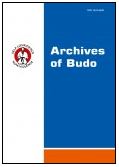2011, Volume 7, Issue 4
Physical fitness differences between Freestyle and Greco-Roman elite wrestlers
José María López-Gullón1, Xabier Muriel1, María Dolores Torres-Bonete1, Mikel Izquierdo2, Jesús García-Pallarés3
1Faculty of Sport Sciences, University of Murcia, Murcia, Spain
2Department of Health Sciences, Public University of Navarre, Pamplona, Spain
3Exercise Physiology Laboratory at Toledo, University of Castilla la Mancha, Toledo, Spain
Author for correspondence: Jesús García-Pallarés; Exercise Physiology Laboratory at Toledo, University of Castilla la Mancha, Toledo, Spain; email: jesus.garcia.pallares[at]gmail.com
Full text
Abstract
Background and Study Aim: The purpose of this study was to examine the differences in the anthropometrical, physical, neuromuscular and physiological markers between Freestyle and Greco-Roman elite male wrestlers. Secondly, this study was carried out in order to validate the crank-arm Wingate test to assess the anaerobic metabolism contribution during an official wrestling match.
Material and Methods: Ninety two male wrestlers, comprising of 39 Freestyle and 53 Greco-Roman competitors took part in a wrestling tournament. Depending on their wrestling style and their body mass (light, middle and heavy weight), 6 competition divisions were formed: Light Weight (body mass between 55-68 kg) in Freestyle (n=16) and Greco-Roman (n=18) style; Middle Weight (body mass between 68-84 kg) in Freestyle (n=12) and Greco-Roman (n=24) style; and Heavy Weight (body mass between 84-100 kg) in Freestyle (n=11) and Greco-Roman (n=11) style. The finalists in each group were recruited to carry out physical fitness marker comparisons (n=36).
Results: No differences were observed in any anthropometrical, physical, neuromuscular or physiological markers between Freestyle and Greco-Roman elite wrestlers in any weight class. The peak blood lactate values attained during the simulated tournament were significantly (p ≤ 0.05) higher than those detected following the crank-arm Wingate test in the six studied groups.
Conclusions: The present results suggest that the current official rule differences between both wrestling styles do not promote any anthropometrical or physical fitness differences in elite wrestlers. The 30s crank-arm Wingate test may not adequately simulate the metabolism involved during an official wrestling match, but it may still be a reasonable indicator of wrestling performance.
Key words: anthropometry, combat sport, crank-arm wingate, maxial power, maximum strength, tournament




